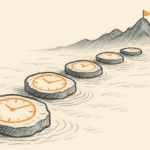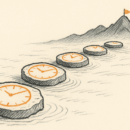The real lesson of Hurricane Katrina
Katrina, a maximum-strength Category 5 hurricane, hit the USA’s Gulf Coast a few weeks ago and wreaked unprecedented havoc. By now you all know the numbers: thousands missing, possibly dead; half a million people displaced; a projected total cost of US$ 200 billion (16 times Kenya’s GDP, if you’re counting); and an estimated half a percentage point knocked off America’s GDP growth by this one event.
The worst happened in New Orleans, a city bafflingly built below sea level. The raging wind and waters destroyed the city’s coastal defences, at one stage leaving 80 per cent of it under water. It was hard to imagine that the TV pictures flashing round the world depicted a city in the world’s only superpower. A major city almost completely flooded, with people awaiting rescue on rooftops and trees; toxic water coursing through the city’s streets; people wandering in the streets, dressed in rags and carrying their possessions in plastic bags. Yet it took a full five days for help to arrive in the form of federal aid.
The chaos did not end with the flooding. Days of looting followed, and for a period New Orleans seemed to be in total anarchy as armed gangs appeared to take over the city. The Superdrome stadium resembled nothing more than a massive refugee camp, with 25,000 people packed into it – but no food, water or sanitation available for such a number. Outside, bodies were reported to be floating in the rivers that were once busy streets.
The USA is now facing some painful truths, wrote Jonathan Freedland in The Guardian: “The first revelation was not spoken in words, but written on the faces of those left behind. Television viewers from Bradford to Bangalore could not help but notice it, and Americans from Buffalo to Bakersfield could not deny it. The women pleading for their lives in handwritten signs, the children clinging to tree branches, the prisoners herded onto a prison roof – they were overwhelmingly black.” For Freedland, Katrina is yet another periodic reminder for America (taking its place amongst the civil war of the 19th century, the civil rights struggles of the 1950s and 1960s, and the Los Angeles riots of the 1980s) that “it is in the relationship between black and white that it has failed to honour its own animating ideals.”
The world now knows that it was mostly the black underclass that lived in the cheap, low-lying (and dangerous) areas; that more than a quarter of the residents of New Orleans live in poverty and are mostly black; that 35 per cent of black households did not have a car, and some were too poor to afford the bus fare that could have saved them. These people could only have been rescued by an organised, publicly funded government effort – one that was simply not forthcoming for days.
This is some state for America to be in, and it has shocked many. Is this the same America that puts men on the moon, the multi-trillion-dollar economy that rules the world? Who are these “Americans” that America refuses to take along with it, who are left as the hindmost, for the devil to deal with?
This larger problem is not American at all – it is a global phenomenon. 2.5 billion people on this planet (white, black and every shade in between) make do on less than two dollars a day. The richest 500 individuals have a combined income greater than the poorest, wait for it, 400 million people. That is how we have chosen to structure our world. There is nothing inevitable about this arrangement. It is not necessary for economic growth that we have an army of atrociously poor people and a few absurdly rich chiefs. In fact it is an impediment. This arrangement persists because it is in the short-term interests of those who rule; and there appears to be a severe shortage of visionaries who can see beyond their own bank accounts and call a halt.
New Orleans just happened to have a large underclass, but the forgotten masses are present all over the world. In Kenya, where 10 per cent of the population controls nearly half the income, we are world-beaters in leaving people behind. Like America’s, our underclass gets it in the neck every time there’s a problem – a natural disaster, a drought, a downturn in the economy. Like America’s, our upper class generally sails through all such events: it drives away from disasters; it relocates its homes; it buys its way out of trouble.
Throughout history, a few people have seen the problem with this arrangement: it is unsustainable. Often, it has taken bloody revolutions and civil wars (in Russia, France, Britain) for change to come. Enlightened leaders, from Bismark to Disraeli to Roosevelt, recognised the issue: that extreme poverty is most often the result of social and economic conditions over which the poor have little control. Malnutrition, poor schools, discrimination, lack of job opportunities and a dangerous environment are central determinants of their fate. So enlightened countries devote considerable resources towards alleviating precisely those conditions.
Writer Polly Toynbee recently pointed us to a revealing study. Professor Richard Wilkinson has assembled a vast array of evidence from all around the world to show the damage done by extreme inequality. If the gap between social classes is too wide in a country, that country will be dysfunctional, violent, sick and unhappy. Sound familiar? Health, happiness, life expectancy – all are correlated to inequality. The USA is the most unequal country in the developed world – and has the lowest life expectancy. In fact, the people of Harlem lead shorter lives, on average, than the people of Bangladesh.
Wilkinson tells us that the primary cause is heart disease caused by stress – “the stress of living at the bottom of the pecking order, on the lowest rung, the stress of disrespect and lack of esteem.” The psychological damage of being at the bottom of the pile is awful. Low status and lack of control over one’s own life is a destroyer of health and happiness. We accept severe inequality at everyone’s peril.
Many observers have noted the speed of the breakdown of social order in Katrina’s aftermath. Some have noticed that in a setting like New Orleans, only the cursory removal of law and order was necessary for US society to descend into anarchy. Others have pointed out that such scenes did not accompany the recent tsunami in Asia, or earthquakes elsewhere, even though the scale of suffering and disaster was greater in those cases. They are right. A society that does not embrace all its people will unravel very quickly. We know that in Kenya: after the 1982 coup attempt; during any recent riot; or simply when the police stop policing. Mayhem ensues – looting, rape, muggings and murders. The dispossessed grab all that they have been denied, in the few minutes or hours available to them. We shoot them down, until the next time.
This idiocy must end. If a hurricane came to teach us the lesson, let us listen.

Buy Sunny Bindra's new book
The X in CX
here »
Popular Posts
- Where are you rushing to—your funeral?June 29, 2025
- How to spot a real thinkerJune 15, 2025
- The pause that saves usJune 8, 2025
- Built the app, forgot the flowJune 22, 2025
- The map will appear—once you start walking.July 6, 2025











